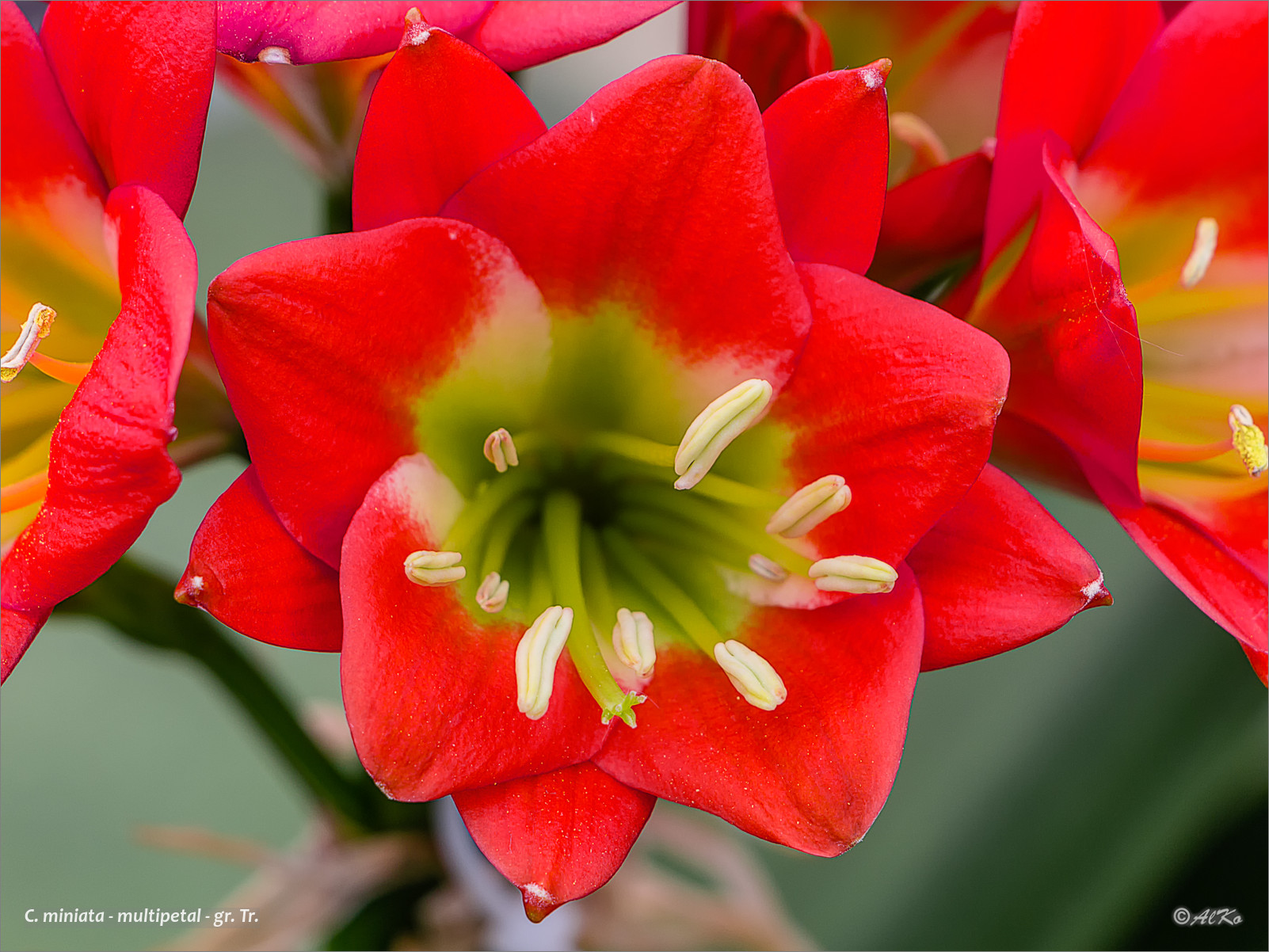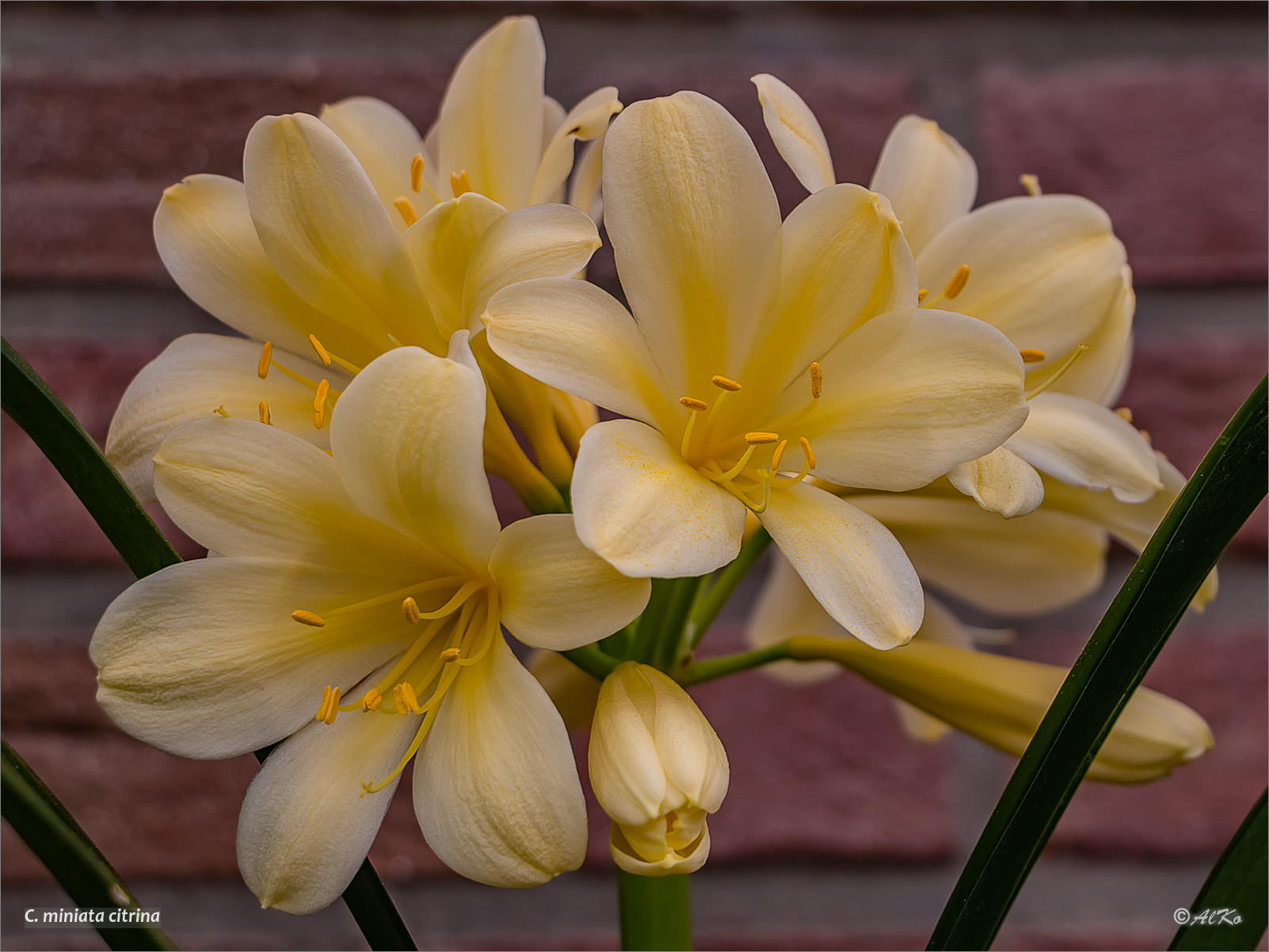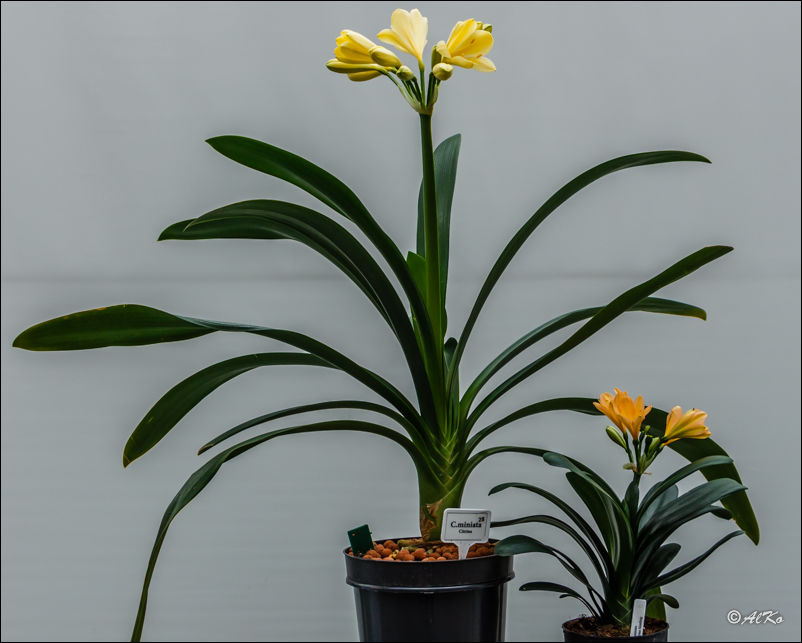
 Clivia miniata can be found in evergreen forests under trees. It grows in well-drained deciduous soil that is rich in humus. It is found in the Morgan Bay area of the Eastern Cape. In the wild it grows to a height of about 80 cm. The leaves are usually about 5 cm wide and about 80 - 90 cm long. Older plants have been found with leaves 9 cm wide and up to almost 2 metres long. However, these are absolutely rare specimens.
Clivia miniata can be found in evergreen forests under trees. It grows in well-drained deciduous soil that is rich in humus. It is found in the Morgan Bay area of the Eastern Cape. In the wild it grows to a height of about 80 cm. The leaves are usually about 5 cm wide and about 80 - 90 cm long. Older plants have been found with leaves 9 cm wide and up to almost 2 metres long. However, these are absolutely rare specimens.
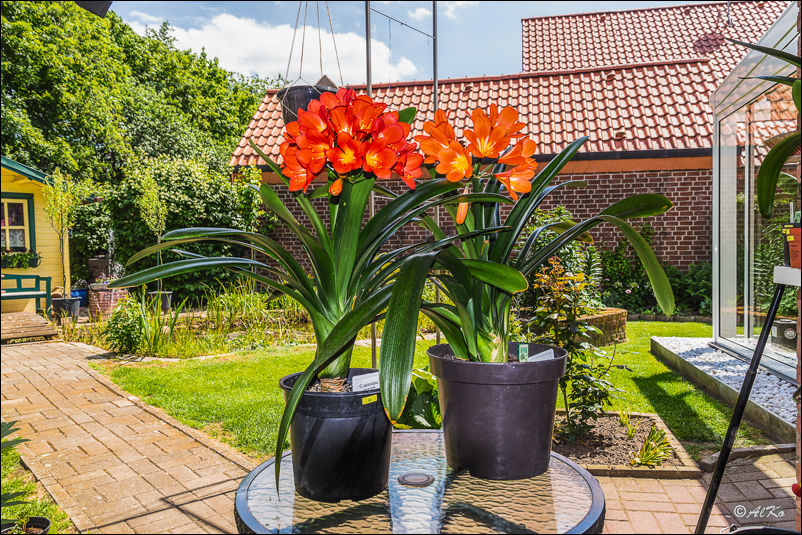
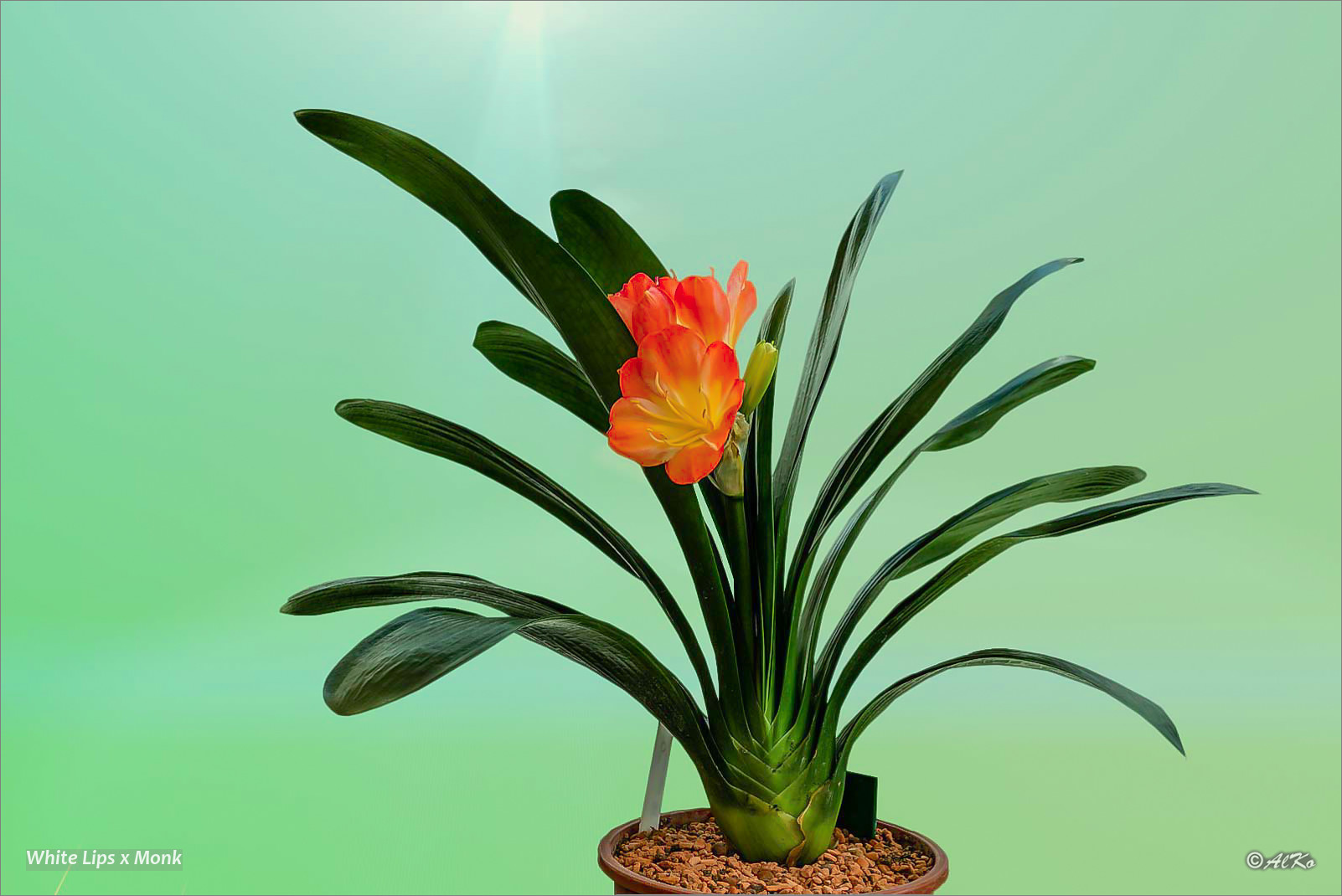
In the wild, the flowers vary from small, narrow-petalled to overlapping trumpet-shaped petals. The colours range from yellow to orange to almost red. However, the orange colour with the yellow throat is predominant. The light and very dark colours are very rare. On a
flower stalk, the flowers usually sit as umbels with up to 20 flowers. However, 40 individual flowers have been counted on vigorous specimens.
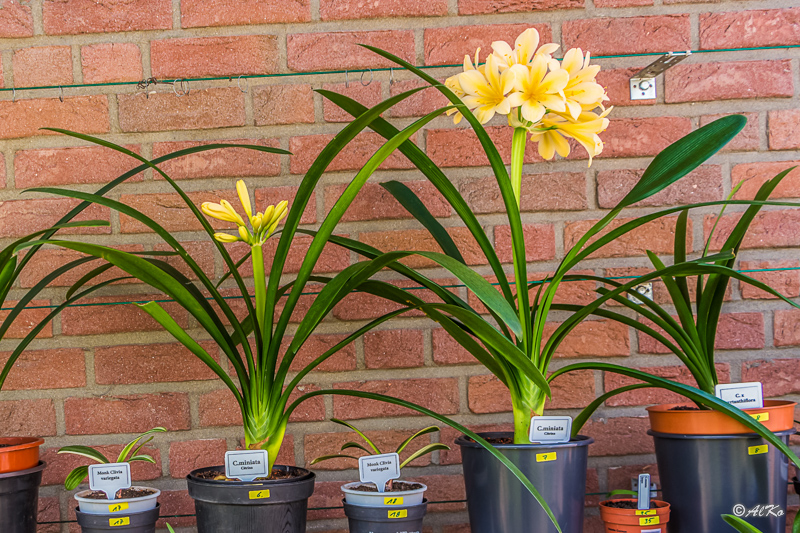
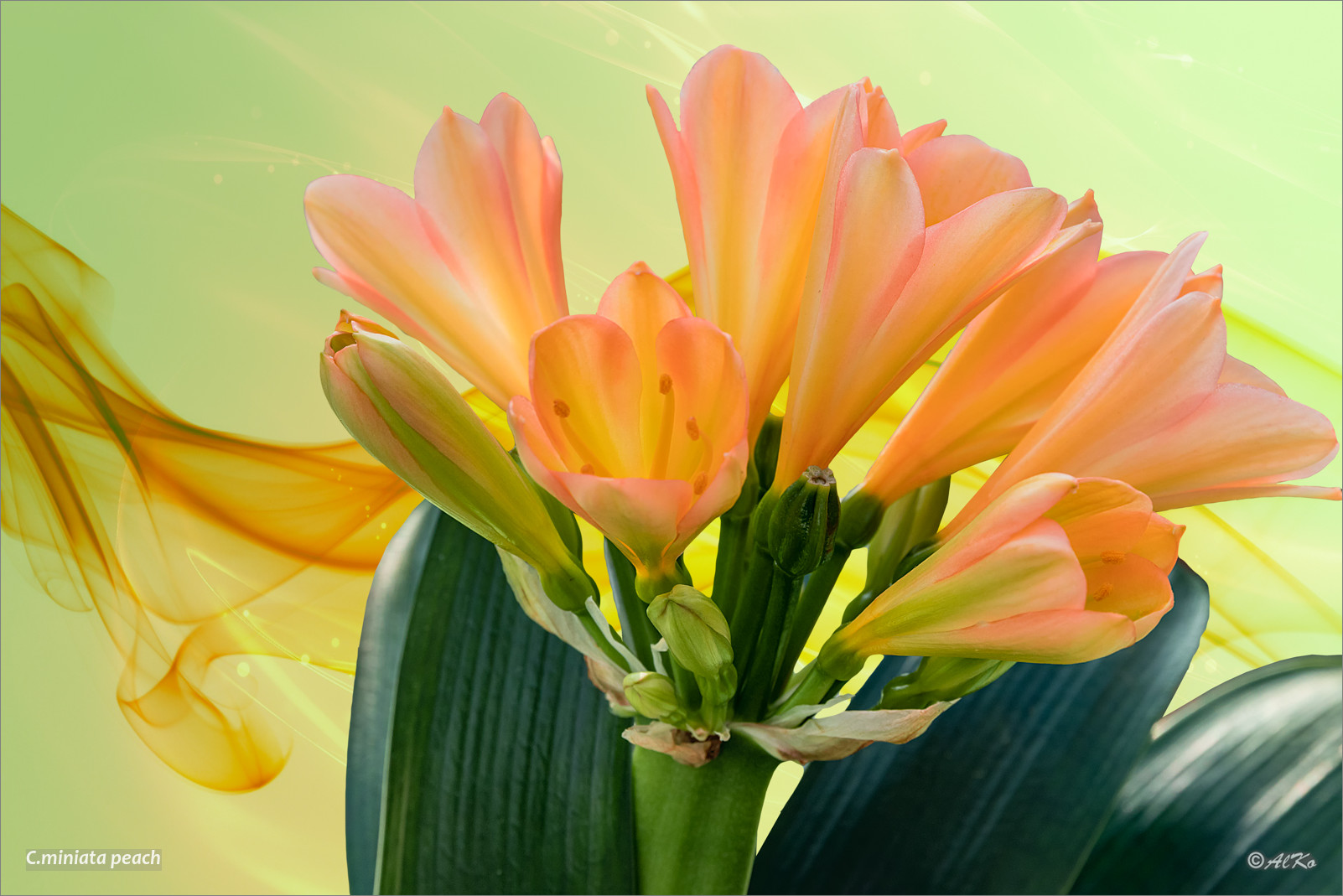
The fertilised flowers form berries in which around 10 seeds ripen. There have also been exceptions with 20 seeds in one berry.

